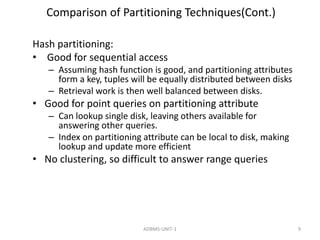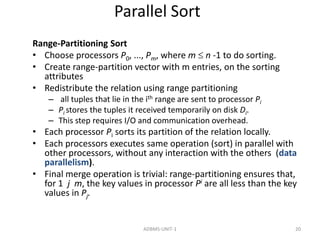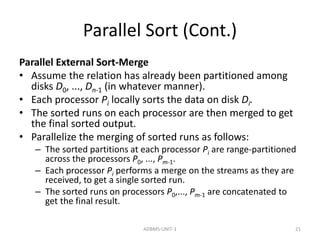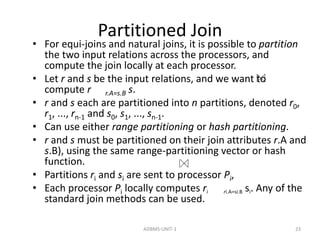This document discusses parallel databases and different types of parallelism that can be utilized in databases including I/O parallelism, interquery parallelism, intraquery parallelism, and interoperation parallelism. It provides details on how relations can be partitioned across multiple disks for I/O parallelism using techniques like round robin, hash partitioning, and range partitioning. It also compares these partitioning techniques in terms of supporting full relation scans, point queries, and range queries.
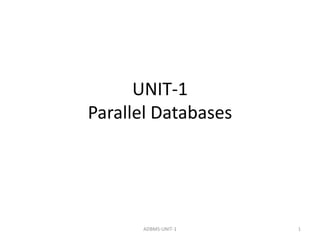
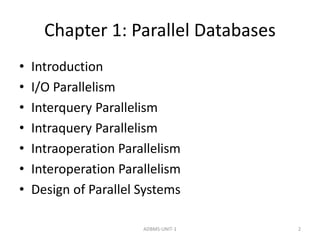

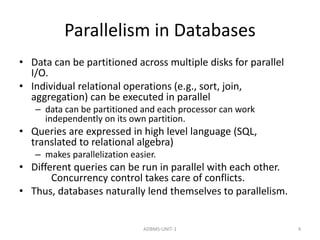

![I/O Parallelism (Cont.)
• Partitioning techniques (cont.):
• Range partitioning:
– Choose an attribute as the partitioning attribute.
– A partitioning vector [vo, v1, ..., vn-2] is chosen.
– Let v be the partitioning attribute value of a tuple.
Tuples such that vi vi+1 go to disk I + 1. Tuples with v
< v0 go to disk 0 and tuples with v vn-2 go to disk n-1.
E.g., with a partitioning vector [5,11], a tuple with
partitioning attribute value of 2 will go to disk 0, a
tuple with value 8 will go to disk 1, while a tuple with
value 20 will go to disk2.
ADBMS-UNIT-1 6](https://image.slidesharecdn.com/paralleldatabases-141213103246-conversion-gate01/85/Parallel-databases-6-320.jpg)


